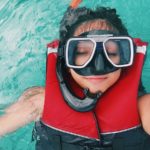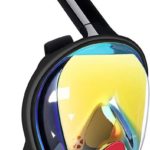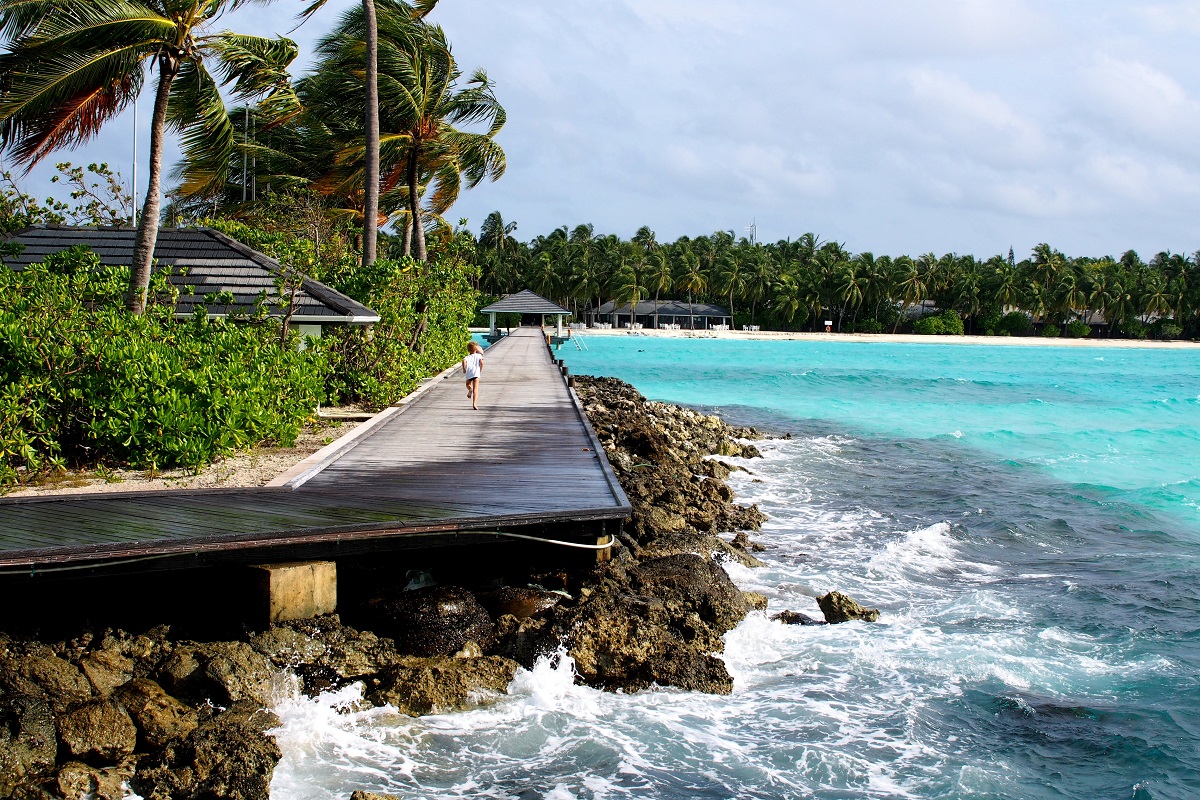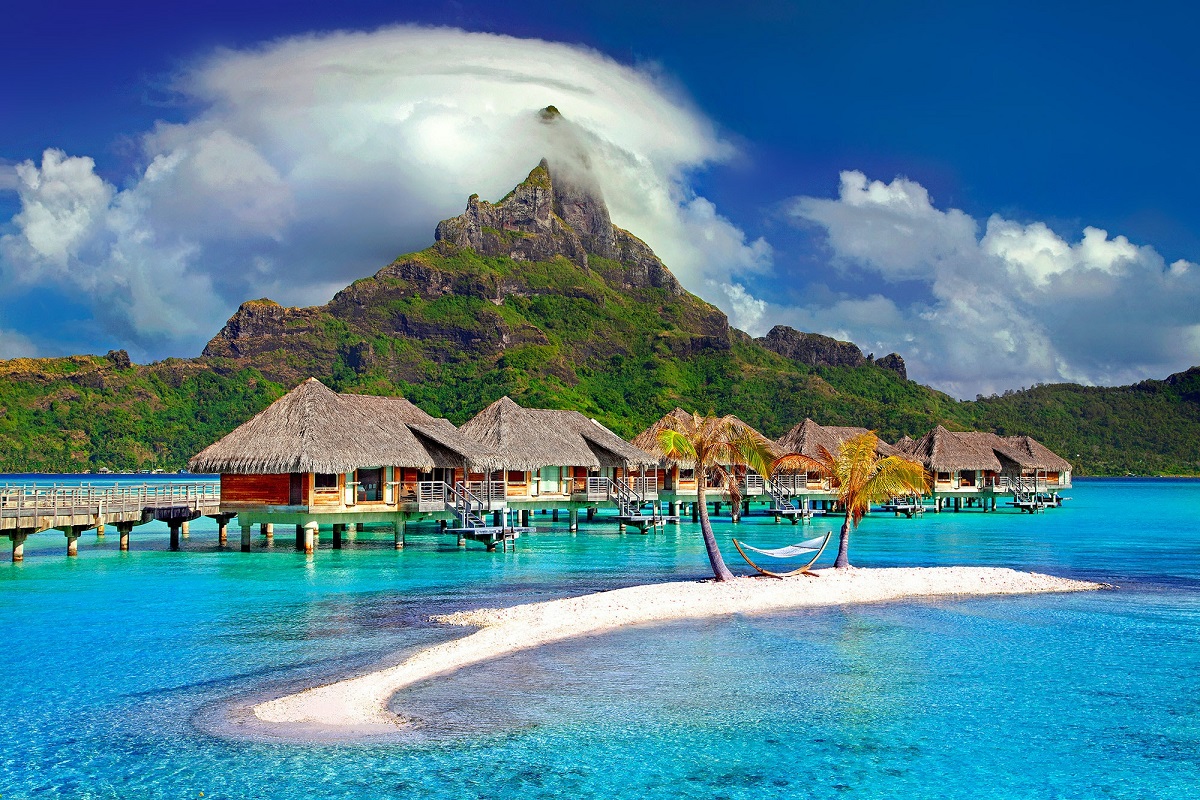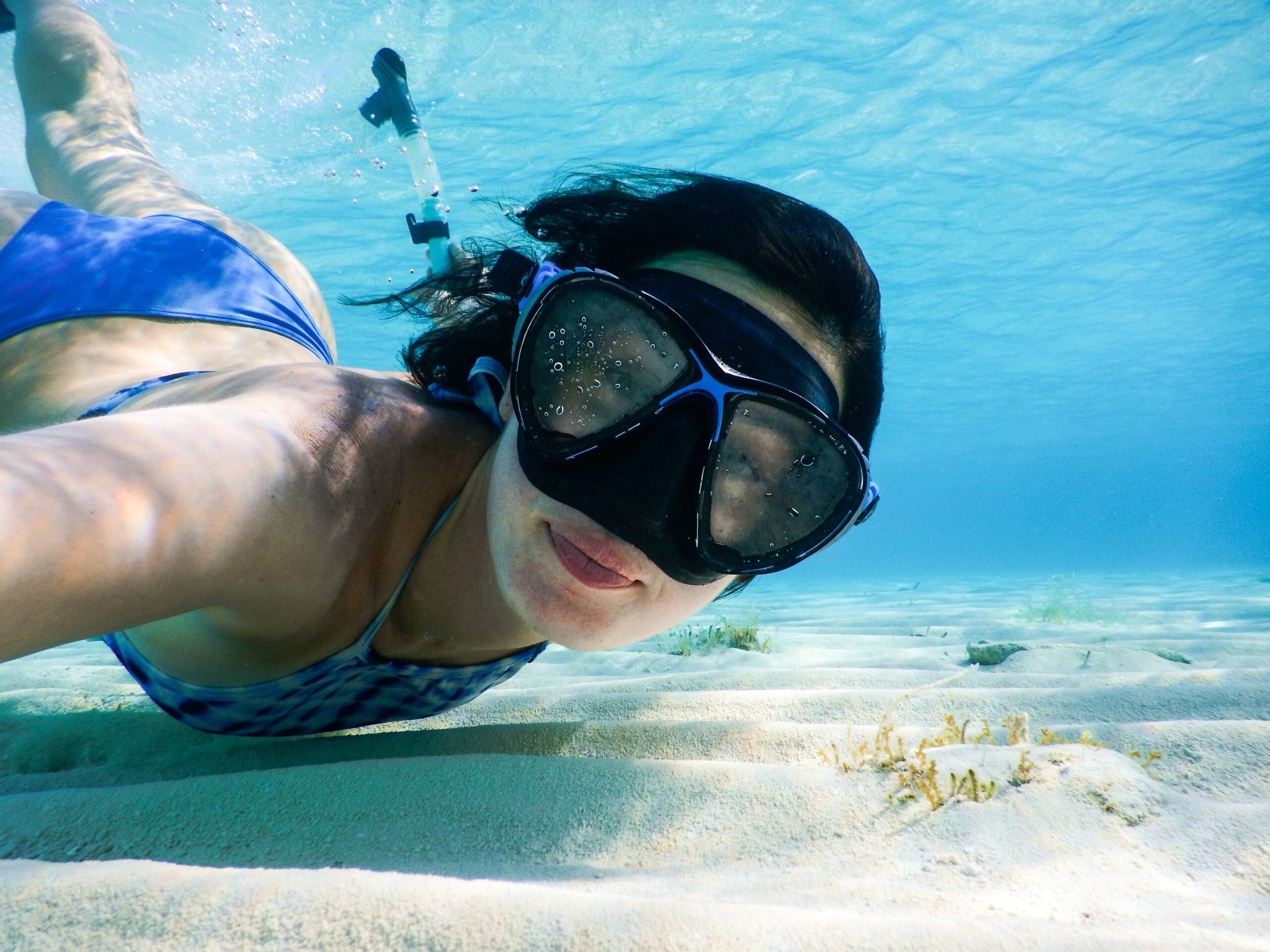What is Snorkeling?
I. Introduction
- Definition of snorkeling
- A brief history of snorkeling
- Why snorkeling is popular
II. Equipment Needed for Snorkeling
- Snorkel
- Mask
- Fins
- Optional gear: wetsuit, snorkeling vest, gloves, and booties
III. Choosing a Snorkeling Destination
- Factors to consider when choosing a snorkeling destination
- Popular snorkeling destinations around the world
IV. Safety Tips for Snorkeling
- Importance of safety when snorkeling
- Tips for staying safe while snorkeling
V. Techniques for Snorkeling
- How to use a snorkel and mask
- How to use fins
- Breathing techniques for snorkeling
VI. Marine Life to Look Out for While Snorkeling
- Types of marine life to look out for
- Importance of respecting marine life while snorkeling
VII. Environmental Impact of Snorkeling
- Impact of snorkeling on marine life and the environment
- Tips for minimizing your impact while snorkeling
VIII. Conclusion
- Recap of the importance of safety and environmental responsibility when snorkeling
- Encouragement to try snorkeling as a fun and exciting activity.
Definition of snorkeling:
Snorkeling is the act of swimming or floating on the surface of the water while wearing a diving mask that covers the eyes and nose, along with a snorkel tube that extends above the water’s surface to allow the snorkeler to breathe air from above the waterline. Snorkeling is a popular recreational activity that will enable people to observe underwater marine life and explore coral reefs without needing scuba diving equipment.
Snorkeling is a fun and exciting way to explore the underwater world without the need for scuba gear. With the right equipment and safety precautions, snorkeling can be enjoyed by people of all ages and skill levels. This article will discuss the basics of snorkeling, including the equipment needed, choosing a destination, safety tips, techniques, marine life to look out for, and the environmental impact of snorkeling.
Snorkeling is the act of swimming on the surface of the water while wearing a mask, snorkel, and fins to observe the underwater world. This activity has been around for thousands of years, with ancient civilizations using hollow reeds as snorkels. Today, snorkeling is a popular recreational activity that millions of people enjoy.
The equipment needed for snorkeling includes a snorkel, mask, and fins. The snorkel is a tube that allows you to breathe while your face is in the water. The mask is used to see underwater, and the fins help you move more efficiently through the water. Optional gear includes a wetsuit, snorkeling vest, gloves, and booties, which can help keep you warm and protect you from scratches and cuts.
A brief history of snorkeling:
Snorkeling, as we know it today, has been around for centuries and has a fascinating history that dates back to ancient times. The first recorded instances of snorkeling can be found in the writings of the Greek historian Herodotus, who described reeds’ use for underwater breathing in the 5th century BC. Later, during the 16th century, Persian divers used primitive diving bells made of animal hides to explore the ocean depths.
In the 1920s, a French naval officer named Yves Le Prieur developed the first modern snorkel, which consisted of a breathing tube connected to a rubber face mask. This invention revolutionized underwater exploration, making it possible for divers to explore the underwater world without having to hold their breath. Le Prieur’s invention also allowed naval personnel to conduct stealth underwater operations during World War II.
In the 1950s and 60s, the popularity of snorkeling increased as more people discovered the joys of exploring the underwater world. The development of new materials, such as neoprene, made it possible to create wetsuits and other equipment that improved comfort and safety while snorkeling. Today, snorkeling is a popular recreational activity enjoyed by millions of people around the world.
Why snorkeling is popular:
Snorkeling is a popular activity for several reasons. One of the primary reasons is its accessibility. Unlike scuba diving, which requires extensive training and certification, snorkeling is easy to learn and can be enjoyed by people of all ages and skill levels. Snorkeling also allows people to observe underwater marine life and explore coral reefs without the need for heavy equipment, making it an affordable and convenient option for many.
Another reason snorkeling is popular is because of its therapeutic benefits. Being surrounded by the beauty of the underwater world, the tranquility of the ocean and the peacefulness of floating on the surface of the water can have a calming effect and help reduce stress.
Snorkeling is also an excellent way to stay active and get exercise. Swimming and paddling with fins can help strengthen muscles and improve cardiovascular health. Snorkeling can also be a social activity that brings people together, whether with family, friends, or fellow travelers.
Lastly, snorkeling allows people to connect with nature in a unique and meaningful way. Observing colorful marine life and experiencing the underwater world can be a transformative experience that leaves a lasting impression on individuals. For these reasons and more, snorkeling remains a popular activity for people around the world.
II. Equipment Needed for Snorkeling:
1. Snorkel
2. Mask
3. Fins
Snorkeling requires some basic equipment to ensure safety and comfort while exploring the underwater world. The essential snorkeling gear includes:
- Snorkel: A snorkel is a tube that allows the snorkeler to breathe while their face is submerged in the water. It typically has a mouthpiece that fits inside the mouth and a valve that prevents water from entering the tube.
- Mask: A mask covers the eyes and nose, allowing the snorkeler to see clearly underwater. A well-fitting mask is essential for a comfortable and safe snorkeling experience.
- Fins: Fins are worn on the feet and help the snorkeler to move through the water more efficiently. They come in various styles and sizes and can be purchased or rented at most snorkeling locations.
Other optional snorkeling gear includes a wetsuit, which can provide thermal protection in colder water, and a snorkeling vest, which can help with buoyancy control and add an extra layer of safety.
When selecting snorkeling equipment, it’s important to choose high-quality gear that fits well and is comfortable to wear. Poorly fitting equipment can be uncomfortable and may even pose a safety risk while snorkeling. It’s also important to properly care for and maintain your gear to ensure it lasts and performs well over time.
III. Choosing a Snorkeling Destination:
1. Factors to consider when choosing a snorkeling destination
2. Popular snorkeling destinations around the world
When choosing a snorkeling destination, several factors should be considered, such as water conditions, accessibility, and marine life. Some of the world’s most popular snorkeling destinations include the Great Barrier Reef in Australia, the Galapagos Islands in Ecuador, and the Red Sea in Egypt.
When it comes to choosing a snorkeling destination, there are several factors to consider. Here are some things to keep in mind:
- Water conditions: The water conditions of your snorkeling destination will impact your snorkeling experience. Look for destinations with clear water, calm waves, and minimal currents for the best snorkeling experience.
- Marine life: If you have specific marine life that you want to see while snorkeling, choose a destination that’s known for that particular species. For example, consider destinations like Hawaii or the Caribbean if you want to see sea turtles.
- Accessibility: Some snorkeling destinations may be more accessible than others. Consider factors like travel time, transportation options, and lodging availability when choosing your destination.
- Budget: The cost of your snorkeling destination will depend on factors like travel costs, accommodations, and equipment rental fees. Choose a destination that fits within your budget.
Here are some popular snorkeling destinations around the world:
- The Great Barrier Reef, Australia: The Great Barrier Reef is one of the most famous snorkeling destinations in the world, offering clear waters and diverse marine life.
- Hawaii, USA: Hawaii is home to several popular snorkeling destinations, including Hanauma Bay and Molokini Crater.
- The Caribbean: The Caribbean is home to several popular snorkeling destinations, including the Cayman Islands, St. Lucia, and the Bahamas.
- The Maldives: The Maldives is a popular destination for snorkeling and diving, offering clear waters and diverse marine life.
- Bali, Indonesia: Bali is known for its beautiful beaches and clear waters, making it a popular destination for snorkeling and other water activities.
No matter where you choose to go snorkeling, remember to approach the activity with safety and environmental responsibility in mind. Following the tips outlined in this article can ensure a safe and enjoyable snorkeling experience.
IV. Safety Tips for Snorkeling:
1. Importance of safety when snorkeling
2. Tips for staying safe while snorkeling
Snorkeling is a fun and exciting activity, but it’s important to prioritize safety while exploring the underwater world.
Safety is crucial when snorkeling, and several tips should be followed to ensure a safe and enjoyable experience. Before entering the water, make sure you are comfortable with your equipment and familiar with the water conditions. It’s also essential to snorkel with a buddy and never go beyond your skill level or comfort zone.
Techniques for snorkeling include learning how to use a snorkel and mask correctly, how to use fins to move efficiently through the water, and proper breathing techniques. It’s also essential to be aware of marine life and how to respect their environment.
There are several safety tips to keep in mind before and during your snorkeling excursion:
- Get familiar with the snorkeling location: Before entering the water, take some time to study the currents, tides, and any hazards, such as rocks or shallow areas. Knowing the location can help you stay safe and avoid potential dangers.
- Use well-maintained equipment: Ensure that your snorkeling gear is in good condition and fits properly. A leaky mask or faulty snorkel can pose a safety risk, so make sure your equipment is well-maintained and functioning correctly.
- Don’t snorkel alone: Always snorkel with a partner so that you can keep an eye on each other and help if needed.
- Stay close to shore: Snorkeling close to the shore or within a designated area can help ensure that you can quickly return to safety if necessary.
- Be aware of marine life: While snorkeling, you may encounter various types of marine life. Learn about the types of creatures that are common in the area and how to safely observe them without disturbing them or putting yourself at risk.
- Respect the ocean: Remember to be respectful of the ocean and its inhabitants. Don’t touch or remove any marine life; avoid standing or stepping on coral reefs, as they are fragile and can be easily damaged.
- Take breaks: Snorkeling can be physically demanding, so take frequent breaks and avoid overexerting yourself.
Following these safety tips can help ensure a safe and enjoyable snorkeling experience. Remember, safety should always come first when enjoying any water-related activity.
V. Techniques for Snorkeling:
1. How to use a snorkel and mask
2. How to use fins
3. Breathing techniques for snorkeling
Snorkeling involves several techniques that can make the experience more enjoyable and comfortable. Here are some basic techniques to keep in mind while snorkeling:
- How to use a snorkel and mask: To use a snorkel and mask, first, put on the mask and adjust the straps to ensure a snug and comfortable fit. Take a few deep breaths and exhale through your nose to clear any water from the mask. Then, place the snorkel in your mouth and make sure it’s secure. Take a deep breath and begin to breathe through the snorkel, keeping your face in the water and your eyes looking straight ahead.
- How to use fins: Fins help you move through the water more efficiently. To use fins, put them on before entering the water and adjust the straps for a snug fit. In the water, use a kicking motion to propel yourself forward. Keep your legs straight, and your toes pointed, and use your hips to generate power in your kicks.
- Breathing techniques for snorkeling: To breathe efficiently while snorkeling, take slow, deep breaths through the snorkel. Exhale forcefully to clear any water from the snorkel, but avoid blowing too hard, which can cause fatigue. Practice taking slow breaths to help you stay relaxed and conserve energy.
- Equalizing: When diving down while snorkeling, you may feel pressure in your ears. To equalize this pressure, pinch your nose shut and gently blow air through your nostrils.
You can make your underwater adventures more enjoyable and comfortable by mastering these basic snorkeling techniques. Remember to take your time, stay relaxed while snorkeling, and always prioritize safety.
VI. Marine Life to Look Out for While Snorkeling:
1. Types of marine life to look out for
2. Importance of respecting marine life while snorkeling
Snorkeling allows you to observe a wide range of marine life in their natural habitat. While snorkeling, you can encounter a variety of marine life, such as fish, turtles, and even sharks. Understanding the types of marine life, you may encounter and how to observe them safely without disturbing their environment is essential.
Snorkeling can significantly impact marine life and the environment, so it’s crucial to be mindful of your actions while in the water. Some tips for minimizing your impact include avoiding touching or stepping on coral reefs, not disturbing marine life, and properly disposing of any trash or waste.
Here are some common types of marine life that you may encounter while snorkeling:
- Fish: Fish is one of the most common marine animals that you’ll see while snorkeling. There are thousands of different fish species, each with its unique colors, patterns, and behaviors.
- Coral: Coral reefs are some of the planet’s most diverse and important ecosystems. They are home to a wide variety of marine life, including fish, sea turtles, and invertebrates.
- Sea Turtles: Sea turtles are magnificent creatures that are a joy to see while snorkeling. They are found in many parts of the world, and some species can grow to be very large.
- Rays: Rays are a type of fish that have flattened bodies and large wings. They are often found on the ocean floor and can be seen gliding through the water.
- Sharks: While sharks are not commonly encountered while snorkeling, they can be seen in some locations. Sharks are important predators in the ocean ecosystem, and learning how to observe them safely and respectfully is important.
It’s important to remember that marine life should be respected and observed from a distance while snorkeling. Avoid touching or disturbing marine life, as this can harm them and disrupt their natural behavior. Remember to follow the “leave no trace” principle and avoid leaving any trash or debris behind in the water. By respecting marine life, we can help protect these fragile ecosystems and ensure they remain healthy for generations.
VII. Environmental Impact of Snorkeling:
1. Impact of snorkeling on marine life and the environment
2. Tips for minimizing your impact while snorkeling
While snorkeling can be a fun and exciting activity, it’s important to be aware of its potential impact on the environment. Here are some things to keep in mind:
- Impact on marine life and the environment: Snorkeling can have an impact on marine life and the environment, especially if it’s done improperly or in sensitive areas. Snorkeling can disturb marine life, damage fragile coral reefs, and leave behind trash and debris.
- Tips for minimizing your impact while snorkeling: To minimize your impact while snorkeling, follow these tips:
- Choose snorkeling locations carefully: Choose snorkeling locations that are known to be environmentally friendly, and avoid areas that are known to be sensitive or off-limits.
- Observe marine life from a distance: Avoid touching or disturbing marine life, and keep a safe distance to avoid harming them or disrupting their natural behavior.
- Use environmentally-friendly sunscreen: Traditional sunscreens can contain harmful chemicals that can harm marine life and coral reefs. Look for eco-friendly sunscreen options that are reef-safe and biodegradable.
- Avoid standing or touching the ocean floor: Standing or touching the ocean floor can damage fragile marine ecosystems like coral reefs. Use fins for swimming and avoid stepping on or touching the ocean floor.
- Respect local rules and regulations: Follow local rules and regulations for snorkeling, and avoid breaking any laws or guidelines that are designed to protect the environment.
By following these tips, you can help minimize your impact while snorkeling and ensure that these beautiful marine ecosystems are protected for future generations to enjoy.
VIII. Conclusion:
In conclusion, snorkeling is a fun and exciting activity that allows you to explore the beauty of the underwater world. However, it’s important to approach snorkeling with safety and environmental responsibility in mind. By following the safety tips and minimizing your environmental impact, you can help ensure that these fragile ecosystems remain healthy for future generations to enjoy. Remember to choose snorkeling locations carefully, observe marine life from a distance, use eco-friendly sunscreen, avoid standing or touching the ocean floor, and respect local rules and regulations. We encourage everyone to try snorkeling and experience the amazing beauty of the underwater world. By doing so, we can promote a greater appreciation for marine life and help protect these precious ecosystems. With the right equipment and techniques, anyone can enjoy snorkeling and discover the beauty of the underwater world. So grab your snorkel, mask, and fins, and get ready for an adventure!
